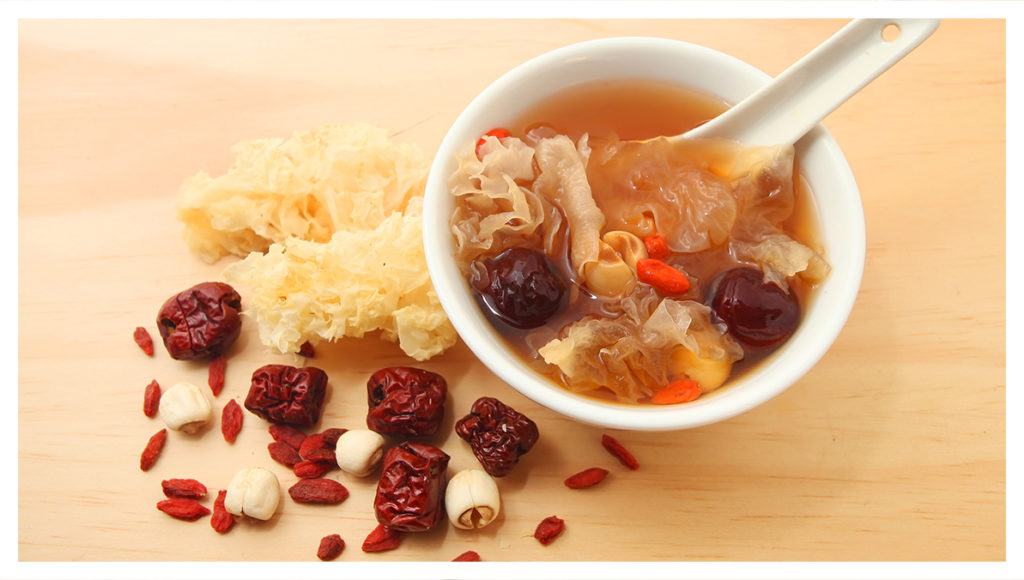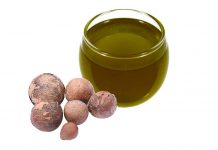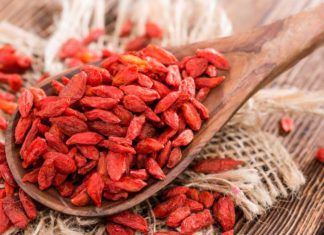
Goji berry has gain popularity in the western world. But did you know that for century Asia have been using Goji berry traditionally consume as a mean for treating illness and used in traditional cooking?
In recent years in the west like Australia, Goji berry is gaining popularity and it is now sold in our local supermarket. When I look at the way it is used today in this western country, there is a difference.
In our modern time, Goji berry has been used most commonly as a dry fruit like grape. We use it in our smoothie, salads or muffin. It is treated like dry fruit. But did you know Goji berry used to be used as medicine boil with other ingredients to form a dark soup to drink? Also, it is used in many Chinese regions as a cooking ingredient like soup and stir-fried.
Let start with the basic for those of us who are new to Goji berry. Then we will investigate ideas to incorporate goji berry in our meal.
What is Goji berry?
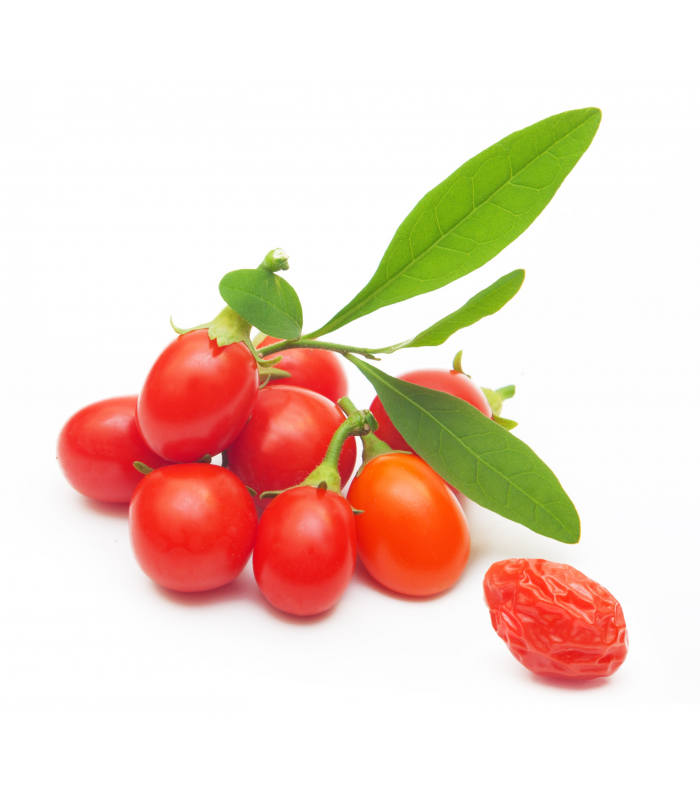 Goji berry also is known as Lycium barbarum (scientific name) or Wolfberry. There are a host of other names depending on where it is from, but for this article, it will be referred to as goji berry or wolfberry.
Goji berry also is known as Lycium barbarum (scientific name) or Wolfberry. There are a host of other names depending on where it is from, but for this article, it will be referred to as goji berry or wolfberry.
Goji berry is a fruit said to be related to tomato and eggplant. It looks is between cherry tomato and chilli.
It is unclear where this plant originates from, some say china, others say, Asia, some say China, Tibet or Mongolia. However, Chinese has a written history of this berry history.
Wolfberry gou qi or orkei tze in Chinese is one of the ingredient used in Traditional Chinese Medicine (TCM).
History of Gojiberry
The first Book was first recorded around 200 BCE by Chinese emperor Shen Nong. Emperor Shen Nong recorded in detail the medicinal and agricultural knowledge in the Shen Nong Ben Cao Jingancient book. In this book, Shen Nong graded each TCM items into 3 grade top, middle and low. It grades are by its health benefit and harmfulness or side effect to the body. Wolfberry is grade as “top” with no harmful impact and maximum benefit.
It not until the 16 century when Li Shi-Zhen a recognised and the first pharmacopoeia or herbal doctor, created a series of books called Compendium of Materia Medica. In this series of books, he stated wolfberry benefit and usage, treatment and stating the dosage used for each condition. What interesting is wolfberry fruits is not the only part of the plant that was used as a treatment; their leaf, flower, root, bark and seed are all used as well. In the current western world, wolfberry fruit is what we focus on.
Wolfberry has been used for thousands of the year by China. It seems like the superfood is spreading its wings, spreading its benefit to the whole world.
Why is it so good for you?
Traditional Chinese Medicine benefit
The TCM considers goji berry as a general health food. It helps strengthen your body, Allow you to keep fit, can prolong your life, and aid the effect of change in weather or season.
TCM has recognised Goji berry aid the liver and kidney function. It helps nourish and detox the liver and kidney, improving the jing (livelihood of the body element) as well as improving the eye function.
Ge Hong a medical master during the East Jin Dynasty produced eye treatment by using the juice of fruit juice. While Sun Simiao from the Tang Dynasty uses goji berry in combination with other herbs, to create a liver tonic tea pills to treat blurring vision.
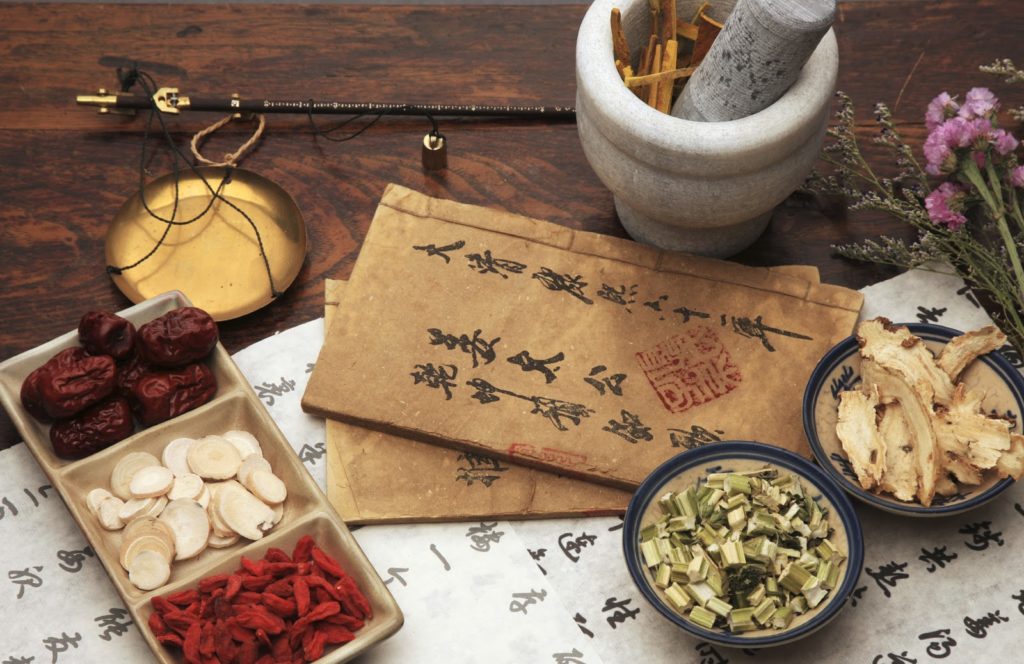 Li Ting in Tang Dynasty during the 16th century created the famous five ancestor tea pills combining goji berry, Semen Cuscutae, and other herbs. This tea pill is said to aid male health which includes male impotence, premature ejaculation, infertility, others include premature greying, and the list goes on.
Li Ting in Tang Dynasty during the 16th century created the famous five ancestor tea pills combining goji berry, Semen Cuscutae, and other herbs. This tea pill is said to aid male health which includes male impotence, premature ejaculation, infertility, others include premature greying, and the list goes on.
Modern Science health benefit
Modern science has dived into the TCM and discovers Goji berry benefit. Benefits like Lowering blood sugar, a good anti-age, anti-cancer, depression, aid the liver and eye health.
Goji Berry, like most other berries(see our super berry article), has a high content of Vitamin A and C. Also high in antioxidant (which include Vitamin C, Zeaxanthin, and carotenoids).
With high antioxidant means, it will aid your immune system, by effectively fighting off free radical and inflammation, allowing your body to prevent cold and illness.
Eyes benefits
Also, an ingredient like Zeaxanthin in goji berry is extremely good to prevent and to improve blindness or macula deterioration (the small central area of the retina of the eye that controls visual acuity).
The journal Drug Design, Development and Therapy published a study showing that goji berry prevents retinal ganglion cells damages, protecting against blindness. In this same study, Wolfberry has shown to prevent specific cancer cell activity as well as inhibit tumour growth, stabilised sugar level, boost immunity and prevent and aid neuronal injury and losses.
Beauty
Besides all these health benefits, goji berry also is an excellent beauty ingredient. Goji Berry promotes healthy glowing skin. Containing Beta-carotene a substance that our body needs to convert to vitamin A. You can say a precursor to vitamin A.
Study with mice by the Faculty of Veterinary Science at the University of Sydney has shown that drinking just 5% of goji berry juice is enough to provide enough antioxidant to fight against UV damages and skin disorders.
Anxiety
The Turkish Journal of Biology published a study that uses rats to show the effect of goji berry on anxiety and depression behaviour. The research shows improvement in their anxiety and even increase their memories.
These are just a few brief benefits of Goji berry, there are many other benefits that we have not stated here.
How is goji berry use traditional?
Wolfberry or goji berry is usually dried and sold not only in China but in the world. Traditionally they are used in the daily diet of the Chinese. They are used in tea, cooking like hotpot, soups, stir-fried and is soaked in wines by itself or together with other ingredients for various health benefits.
Wolfberry is very much a typical food that family would incorporate into their daily lives not only for its’ health benefit but also for its taste in combination with other ingredients. Food to then is very much for health.
On the other side of the scale, Goji berry is used in TCM where train herbal doctor combines goji berry with other ingredients to address an individual concern or health issue. You usually pay for a packet or more. Bring it home follow the instruction of cooking the ingredient. This prescription is often not very tasty. It is boil to become a dark liquid for you to drink.
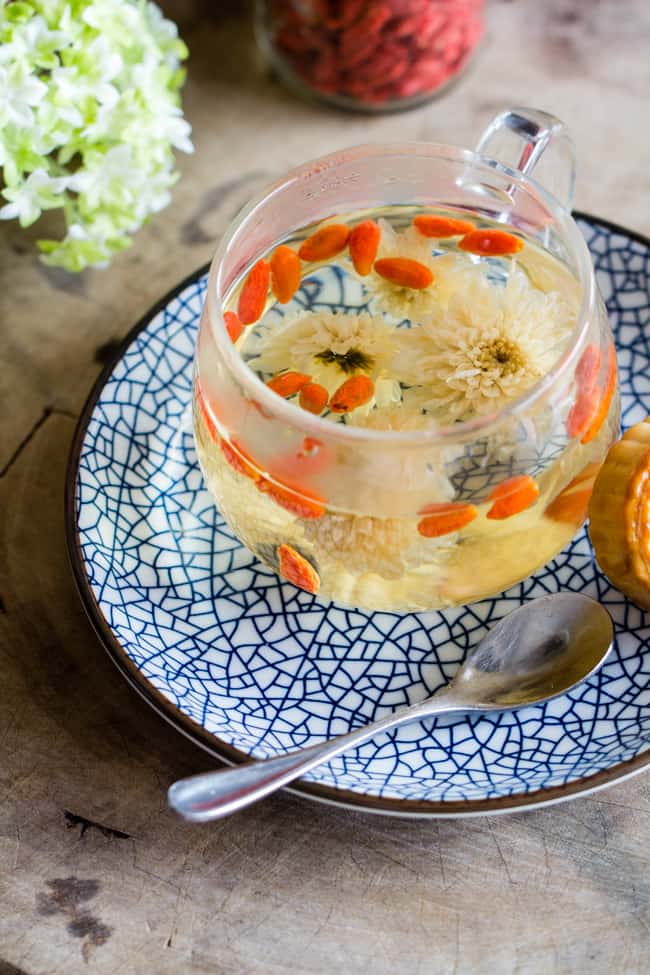
The easiest way to consume wolfberry is as fresh fruit, dried fruit or through tea. Goji berry is said to be a Yin (hot) ingredient; hence, it is recommended to drink goji berry tea in the afternoon. Put goji in boiling water, leave it to soak, and once it has cooled down, you can drink it. For better sleep, it is recommended to add chrysanthemum, honeysuckle, hawthorn or honey. However, it is not recommended to mixed green tea with goji berry because of the astringent adsorption from the tannic acid in green tea, creating lingering bitterness in your mouth which may not be pleasant.
In China, especially those cold regions, Goji berry is used in a lot of there day to day cooking (as mention Goji berry is considered a hot ingredient in the TCM). It is used in their soup along with other TCM, stir fry, hot pot and even sweet, dessert.
Below are some receipts.
Soup
Shiitake mushroom and Goji Berry Chicken Soup
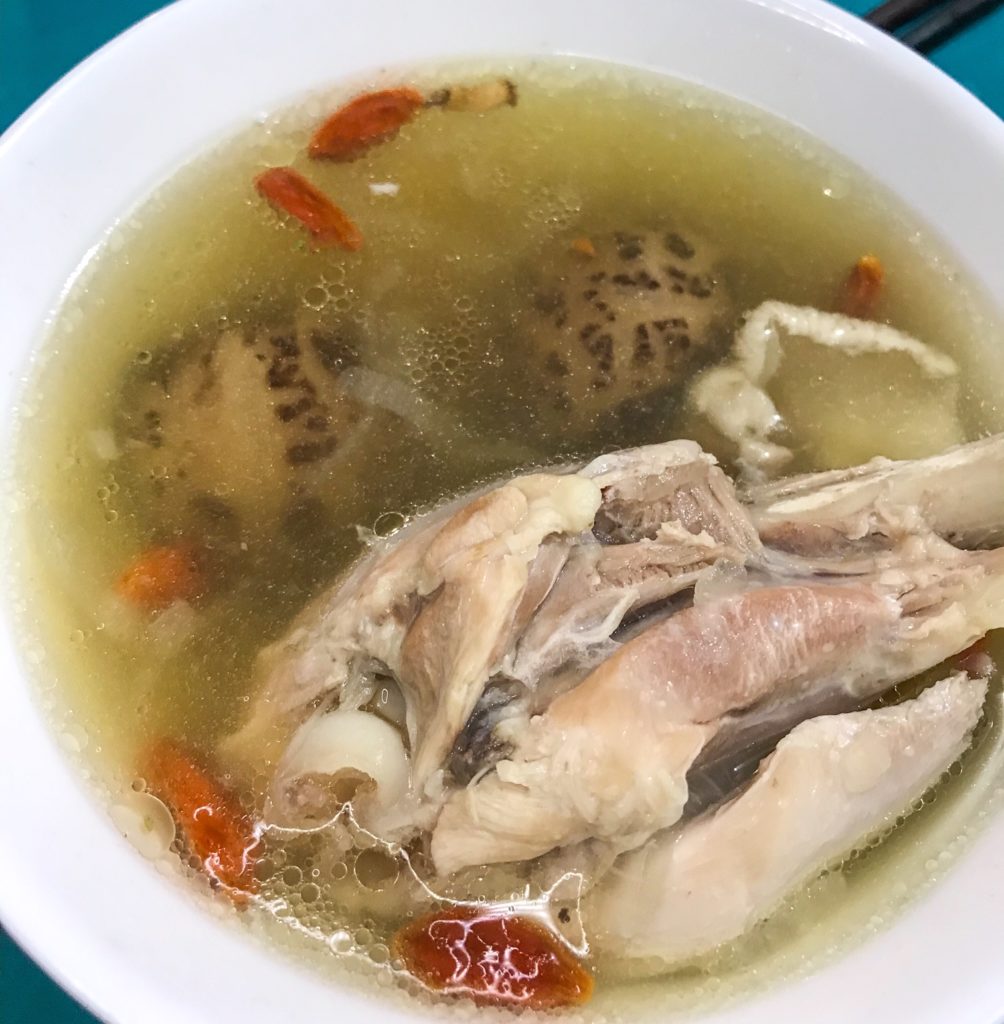
Serves 2 to 3
Ingredients:
- 2 chicken thighs and drumsticks (preferably organic)
- Water to immerse the chicken pieces (Note: You can substitute part of the water with liquid chicken stock)
- 1 large onion, peeled and sliced
- 4 garlic cloves, crushed whole
- 2inch ginger, peeled and shredded
- 8 shiitake mushrooms (If your used dry shiitake mushroom wash and soak it for a few hours before use)
- 5 tbsp dried goji berries, soaked in water to rehydrate
- 1 fresh medium-sized chillies, seeded and finely sliced
- 1tsp salt or to taste
Directions:
- Place the water(stock) and chicken pieces in a large pan. Add the onions, garlic, mushrooms, ginger and place with the chicken in the pan. Bring to boil and when boiling, turn down to low heat to simmer gently for 1 1/2 to 2 hours, or until the chicken is tender and falls apart. Remove from heat
- Five minutes before serving, add the goji berries
- Garnish with sliced ginger and chilli
Mushroom hot pot

Ingredients:
- 5 bowls water
- 2 sliced (approx 2-3mm thick) of ginger
- 10–20 goji
- 2 Shiitake
- 1 spoon salt
- Chick stock or bone soup
Direction:
- In a pot put water, chicken stock or bone broth, ginger, shiitake, goji and salt.
- (note: if you are using dry stock add water, but you are using liquid stock’s you reduce the water or don’t add water depending on who much liquid stock you are adding into the soup)
- After the soup boil, lower the heat to low and let it simmer 10 minutes.
- The soup pot is done, you are ready to dip whatever meats or vegetables you want.
Stir fry
In Asian cooking just practically with any dishes, you can add a small hand of goji berry to any stir-fried to add sweetness to the dish.
Stir-fried Chinese Spinach with Goji Berries
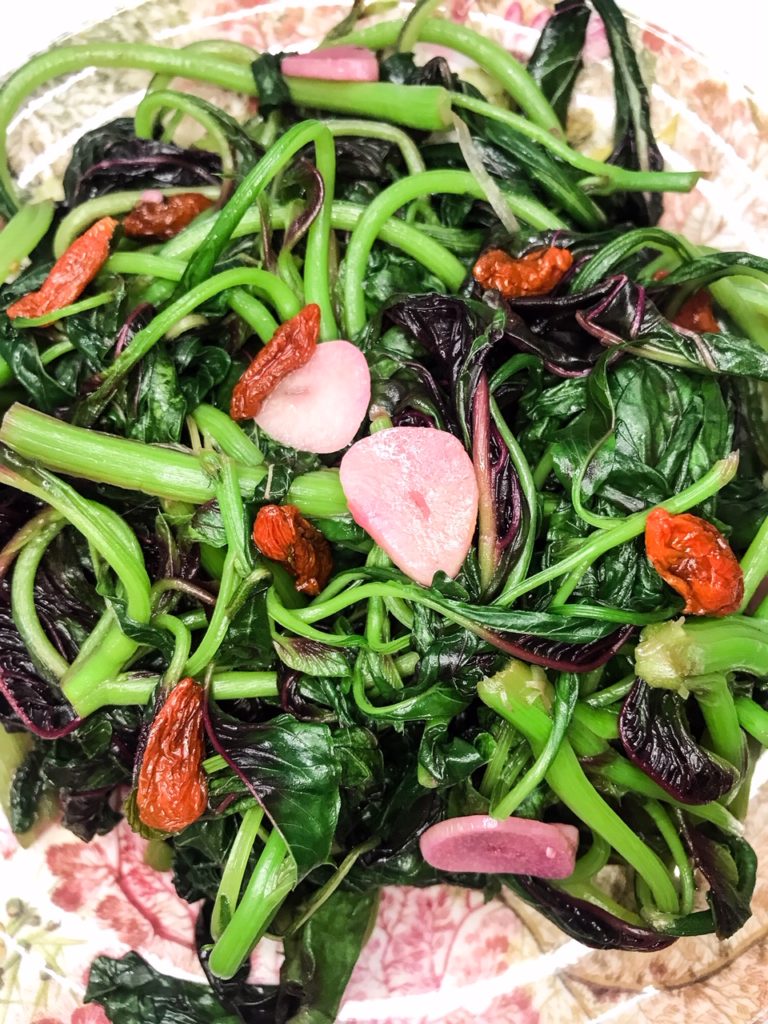
- 500 gram of Chinese Spinach or any other leafy vegetable
- 1 spoonful of wolfberries
- 4 cloves of garlic, thinly sliced or minced
- Sprinkle of salt
- 1 tablespoon of cooking oil
Direction:
1) Cut off root edge of Chinese Spinach. Wash and remove the outer layer of fibre on stems. Cut vegetables, lengthwise.
2) Heat oil in a wok over high heat. Place garlic, stir-fry for 30 seconds, or until fragrant and lightly browned.
3) Quickly add in vegetables, sprinkle some water, and stir fry for 1 min.
4) Add wolfberries, and stir-fry for another minute. Sprinkle salt, and continue to fry for 20 seconds before heat off. Serve warm.
This can be a company with sweet soy and chop fresh chilli as a dip for the stir-fried.
Yam/potato and goji berry congee
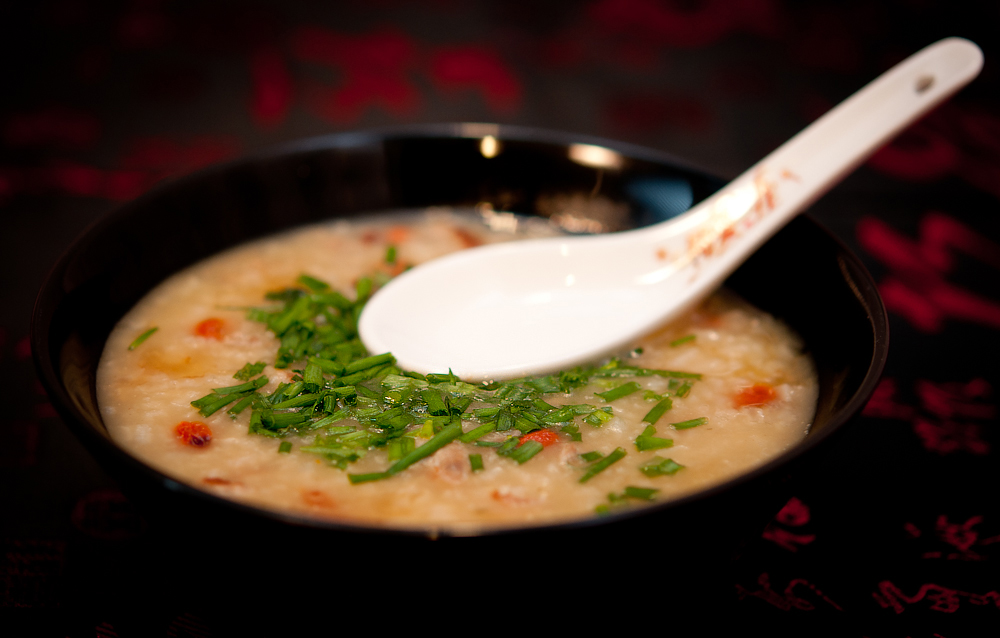 Ingredient:
Ingredient:
- 1 (about 200 gm) fresh Chinese potato or yam, preferably fresh, or dried
- 200 gm pork shin
- 3 Tbsp (about 40 gm) fox nuts or lotus seeds
- 150 gm rice grains
- 2 L water
- 1 Tbsp oil
- 2 Tbsp (20 gm) goji berries, rinsed and drained
- salt, to taste
- chive/green onion, chopped (optional)
Directions:
- For fresh yam peel the Chinese yam and cut into thick slices. Note: It’s best to wear a pair of gloves when peeling yam. Fresh Chinese yam is quite sticky and might make your skin itchy when your skin is peeled.
- Blanch the pork shin in boiling water to remove any impurities.
- Rinse all other ingredients and drain well.
- In a large pot, bring water and stock mixture to a boil. Add rice. When the rice is boiling, turn the heat down to medium-low. Cook uncovered until the congee gets a creamy texture (1.5 – 2 hours), stirring occasionally. If the congee gets too thick, add some water.
- About 10 minutes before the congee is ready, add in the goji berries, potato and pork. Stir well. Season with salt to taste.
- Sprinkle some chopped chive/green onion to serve. Serve hot.
Sweet white fungus soup
Ingredients:
- 1 large dried snow fungus about 40 grams
- 20 g dried longan
- 10 dried red dates
- 5 cups water about 1/2 litre
- 60 g rock sugar
- 20 lotus seeds
- 30 g goji berries
Directions:
-
Clean the red dates, black dates, lotus seeds, dried longan, and goji berries through the water.
-
Soak the dried snow fungus in warm water for 15-30 minutes, until it is soft and plump. Pour the soak water out. Cut snow fungus into smaller pieces and remove the hard yellow crust at the bottom out, we don’t need this part.
-
Put the snow fungus, red dates, black dates, lotus seeds in a large pot. Add water and bring it to a boil. Once it reaches boiling point lower the heat to let it gently simmer for the next 20 minutes. Cover it with a lid, but leave a gap for steam to escape.
-
Once ingredients have softened, add sugar rock and stir until melt. Add more or less sugar following your taste. Once you are happy with the level of sweetness, add the goji berries and cook for another 5 minutes and then turn off the heat
-
The dessert can be served warm or cold
Modern Western Consumption
In the west Goji berry is used as a supplement, usually eaten dry grape or raisin. Goji berry becomes more recognised by the west, and we can see it been used in breakfast like cereal, yoghurt topping, in the porridge, chia pudding; snack like bars, balls; salads; desert-like brownie, cookies, cake and so on. Goji berry is used the same way as a raisin or dry fruit in any recipe. This is because goji berry has a sweet taste to it.
Most of the recipes used in the west are used as topping like that of yoghurt, oats, chia and porridge, which is excellent as a natural boost healthy additive to any of your meal. If you have it use it if not the food would still be great.
It more commonly uses in sweet food like cake, bars, balls, brownie, etc. There are more and more recipes coming out using this ingredient. There are very few savour dishes but hopefully, with increased sharing of a traditional way of cooking, we will create new ways of using this ingredient in a savoury way.
Chickpea Goji Berry Salad
Ingredients
- 1 – 19 oz can chickpeas, rinsed well and drained
- 1 10 oz can mandarin orange segments in juice and drained
- ⅓ cup sliced almonds, toasted
- ⅓ cup dried goji berries
- ½ cup red onion, chopped fine
- ½ cup parsley, chopped
- ½ cup light feta cheese, crumbled
- 2 Tbsp apple cider vinegar
- 1 Tbsp olive oil
- 11/2 Tbsp Sugar
- Pepper, to taste
Directions:
- In a dry pan, add the almonds and toast it until it is golden. This should only take only a few minutes.
- In a large bowl, combine all the salad ingredients.
- In a separate small bowl, mix all the dressing ingredients with a fork and pour over salad.
- Toss well and store in the fridge. Tastes best when it’s chilled in the refrigerator for a few hours.
Goji berry is easy to consume as you can make tea out of it or eat it just as it is. It sweet favour is ideal for sweet food, snack for those sweet craving, but you can eat it in savour food and soup-like that of traditional Chinese or Asian cooking.
These are just some ideas for you to use, but there are plenty of recipes out there that you can explore to incorporate this superfood into your meals.



